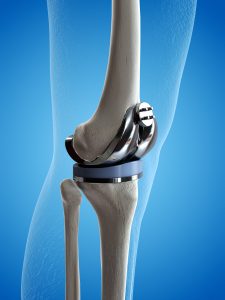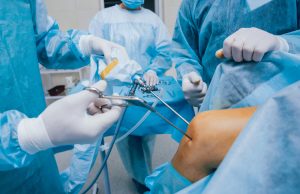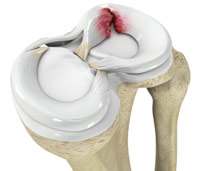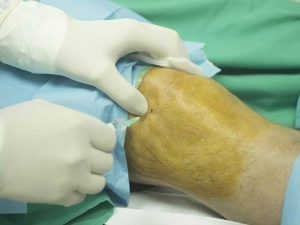KNEE TREATMENTS
Knee Treatments
Total Knee Replacement

A total knee replacement is a surgical procedure whereby the worn out joint surfaces are removed and an artificial replacement is inserted through an incision (cut) on the front of the knee.
This operation can help with the symptoms of osteoarthritis and inflammatory arthritis. It is classified as major surgery, and as such, is has some risks involved which will be discussed with you during the consultation process.
After surgery, the rehabilitation process will involve a period of physiotherapy where muscle strengthening and range of movement exercises are a very important of the process.
Partial Knee Replacement

A partial knee replacement is a surgical procedure that replaces that part of the knee that is affected by arthritis only, sparing the rest of the knee. The ligaments are not removed and it is a more conservative form of surgery. Partial knee replacements can be medial (inside part of the knee) or lateral (outside part of the knee), although the most commonly, a medial partial knee replacement is performed.
The partial knee replacement is a form of knee replacement that has over 40 years of history. It is therefore not an experimental nor a new procedure. However, the surgeon must be appropriately and especially trained and must perform a high number of these procedure per year.
It is also classified as major surgery and also has a number of risks and possible complications, but they are less when compared to a total knee replacement.
It is a procedure that is not appropriate for all knee conditions that require replacement, but when it is indicated, it can be very helpful and successful in treating patients’ symptoms.
Mr. Soler successfully completed his fellowship in Hip and Knee surgery at the Nuffield Orthopaedic Centre, part of Oxford University Hospitals and specialises in the Oxford Partial Knee Replacement ®.
Specific details about this type of operation can be discussed during the consultation process.
Knee Arthroscopy

Knee arthroscopy, or commonly known as keyhole surgery, is a procedure through which the surgeon can access the inside of the knee and perform further procedures inside the knee. The advantage is that it is less invasive than traditional operations which involve making a large incision and opening the whole joint.
Procedures that can be preformed with arthroscopic surgery include: removal of loose bodies, removal of a torn part of the meniscus, repair of the meniscus, ligament reconstruction and more.
The possible risks and complications will be discussed at the time of your consultation.
Meniscal Surgery

When indicated, surgery to the meniscus can be effective in controlling its symptoms. Usually, this is performed through arthroscopic surgery.
The tear of the meniscus can either be trimmed or repaired by way of internal sutures. There are specific situations which would determine one procedure over the other.
Repair of the meniscus usually will involved a period of the use of crutches and restriction of the ability to bear weight through the knee.
The details of the specific surgery and the required rehabilitation protocol can be discussed at the time of consultation.
Knee Injections

Knee injections usually contain a form of steroid and local anaesthetic which is injected into the knee joint. These can be perfumed in the outpatient clinic during the consultation process.
There are specific reasons to suggest knee injections and these will be discussed, together with possible side effects and risks, at the time of consultation.


